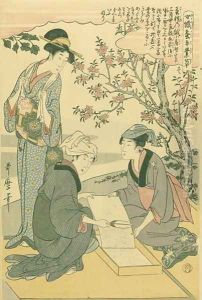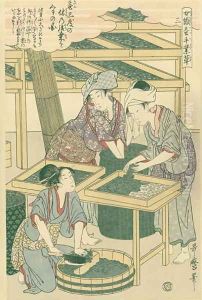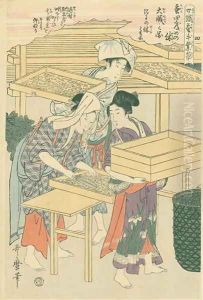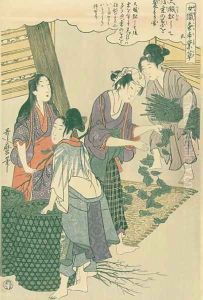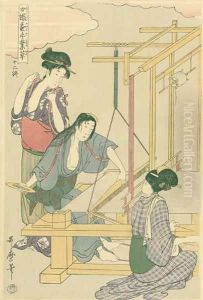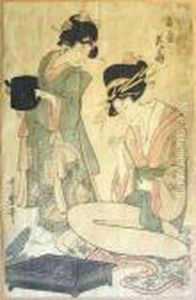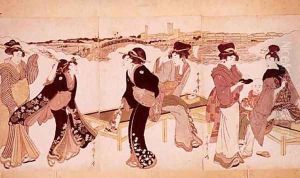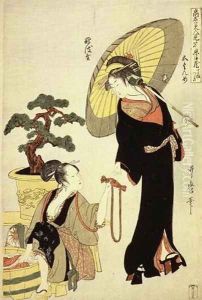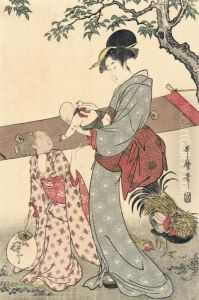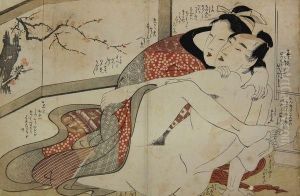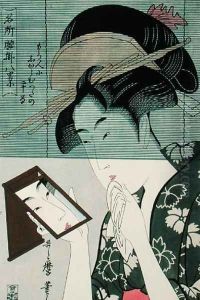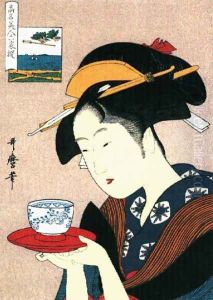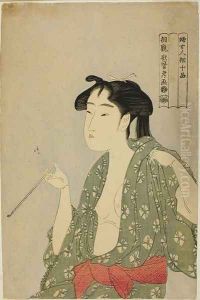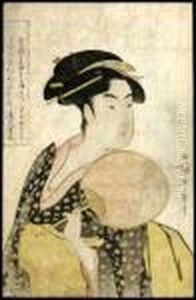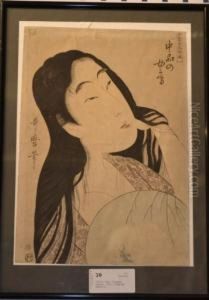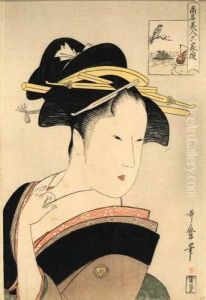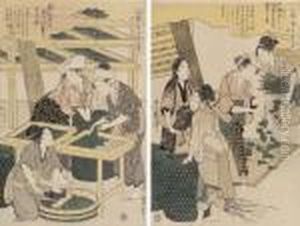





Nine Prints From The Series Joshoku Kaiko Tewazagusa (women Engagedin The Sericulture Industry), Comprising "tending The Newly Hatchedworms, No.1," Depicting A Woman With A Feather Brushing Worms Fromincubation Paper, Two Women Looking On; "pickin
-
About Reproduction
Discover the allure of art with our faithful reproduction of "Nine Prints From The Series Joshoku Kaiko Tewazagusa (women Engagedin The Sericulture Industry), Comprising "tending The Newly Hatchedworms, No.1," Depicting A Woman With A Feather Brushing Worms Fromincubation Paper, Two Women Looking On; "pickin", originally brought to life by the talented Kitagawa Utamaro. Unlike posters or prints, our hand-painted oil painting breathes an unique sense of depth and texture into your space. Every detail, every stroke, and every texture is meticulously recreated, paying the perfect homage to Kitagawa Utamaro and his artistic vision.
Owning this piece is more than just decoration - it's a statement of your refined taste in art. Let the vibrant colors and intricate details of this replica serve as a daily reminder of the beauty in our world. Elevate your decor and appreciate the richness of art with our replica of this masterpiece.
-
Painting Description
"Nine Prints from the Series Joshoku Kaiko Tewazagusa (Women Engaged in the Sericulture Industry)" is a captivating series of woodblock prints by the renowned Japanese artist Kitagawa Utamaro (c. 1753–1806). Utamaro, celebrated for his exquisite portrayals of women, extends his artistic exploration into the realm of sericulture, or silk farming, through this series. The collection vividly depicts the various stages of silk production, focusing on the roles and contributions of women within this vital industry of Edo period Japan.
The series is notable for its detailed representation of the sericulture process, from the nurturing of silkworms to the production of silk. One of the prints, titled "Tending the Newly Hatched Worms, No.1," exemplifies Utamaro's skill in capturing the intricacies of this labor-intensive process. It shows a woman delicately using a feather to brush worms from incubation paper, with two other women observing the meticulous task. This scene, like the others in the series, not only showcases the technical aspects of silk production but also highlights the elegance and grace of the women involved in the industry.
Utamaro's work is celebrated for its ability to convey the beauty and complexity of Japanese life and culture during the Edo period. The "Joshoku Kaiko Tewazagusa" series is a testament to his mastery in illustrating the nuanced interactions between humans and their environments. Through his focus on sericulture, Utamaro provides a glimpse into the economic and social importance of silk in Japan, while also celebrating the essential role of women in sustaining this traditional industry.
The series is a significant contribution to the ukiyo-e genre, offering insights into the historical and cultural context of 18th-century Japan. It remains a valuable resource for scholars and enthusiasts of Japanese art and history, illustrating the interconnectedness of art, industry, and society in a period marked by both tradition and change.
-
Lead Time & Shipping
When you order this oil painting replica, it typically takes 2-3 weeks to paint. If the artwork is more complex, it might need a little more time to ensure the best quality. Once it's ready, we'll send you a photo for your approval. After you give the green light, we'll ship it to you for free.
-
Return & Refund
We believe in the quality of our hand-painted oil painting reproductions, and your satisfaction is our priority. If for any reason, you are not completely satisfied with your purchase, we offer a 45-day return policy. You can return your artwork within 45 days of receipt and receive a full refund. Please note that the artwork must be returned in the original packaging and in the same condition as it was received.





